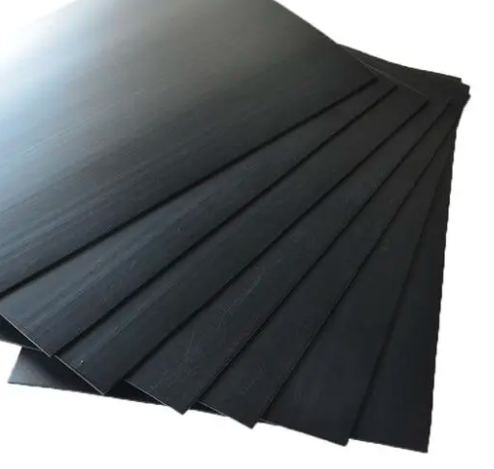- Understanding the Role of Geomembrane Liners in Waste Management
- Innovations in Geomembrane Liners for Water Management
- Geomembrane Liners: A Comprehensive Guide
- The Future of Geomembrane Liners in Civil Engineering
- Geomembrane Liners: Enhancing Landfill Stability
Manager:
WhatsApp:+86 177 0135 2670
Tel:+86 177 0135 2670
Email:marketing@okorder.com
Address:3rd Floor, No.2 Building, No.1 Sanlihe Road
HDPE Geomembrane Sheet: The Basic Unit for Modern Engineering Solutions
In the complex world of civil engineering and environmental management, ‘hdpe Geomembrane sheet’ stands out as a versatile and strong product known for being exceptionally tough, flexible and cost-effective. These are high-density polyethylene (HDPE) sheets used in various applications including landfilling, waste management, water and wastewater treatment among others to show their versatility and durability.
The HDPE Geomembrane Sheet: A Multi-use Resolution
These sheets of HDPE geomembranes are engineered so as to meet specific quality control standards that ensure their performance as well as longevity. They are therefore designed with formulated sheet density of 0.940 g/ml or higher combined with thicknesses ranging from 0.75 mm (30 mils) to 3.0 mm (120 mils), which caters different project requirements.
Landfills And Waste Management
One of the main applications of HDPE geomembrane sheet is in landfills whereby it functions as an essential liner to prevent leachate from infiltrating into the surrounding soil and groundwater. Their durability and resistance to chemicals make them ideal options for waste storage facilities such as ponds, lagoons among others because they protect against leakage of hazardous materials.
Water Plus Wastewater Treatment
In water plus wastewater treatment plants HDPE geomembranes function as liners for tanks, reservoirs, containment structures hence preventing any leaks that may lead to pollution. This has led to their preference in construction of water ponds meant for treatment purposes due to their UV radiation resistant properties coupled up with good chemical resistance characteristics.
The Mining Plus Oil & Gas Operations
Mining and oil & gas industries largely utilize HDPE geomembrane sheets which line tailings ponds, heap leach pads, etc., so that there can be no leakages or environmental pollution related with them. In addition these also serve very well as secondary containment for storage tanks to ensure that there is extra level of protection against spills and leaks.
Agriculture Including Aquaculture
In agriculture, HDPE geomembrane sheets are used as liners in irrigation canals, reservoirs and ponds, preventing water loss and contamination of the ground water. In aquaculture, they are used to line fish and shrimp farms thus keeping seepage at bay since it may contaminate our environment.
Civil Infrastructure Plus Construction
HDPE geomembrane sheets have a wide range of applications across civil infrastructure including landfill liners; mining heap leach pads besides wastewater treatment plants. These properties make them suitable for these applications due to their high tensile strength, puncture resistance, chemical resistance among others. They are also utilized as a barrier on underground storage tanks which prevents leakage thereby avoiding environmental contamination.
The Future for HDPE Geomembrane Sheets
There is an optimism about the future of HDPE geomembrane sheets with ongoing research to enhance their properties and broaden their use. Material science and engineering innovations are likely to enhance their resistance capacity against cracking in environmental stress, UV radiation plus chemicals thus increasing their service life while improving its performance under varied conditions.

Innovation And Quality Assurance
There is a standard specification developed by GRI known as GRI-GM13 that outlines test properties, testing frequency as well as recommended warranty periods for HDPE geomembranes. This specification ensures maintenance of manufacturing quality control (MQC) so that all the geomembranes meet minimum physical mechanical chemical requirements for intended use.
Durability and Environmental Impact
A study on the durability of HDPE geomembranes highlights this as an aging and degradation process, involving physical aging and chemical aging. It is underscored by the researcher that, to guarantee long-lasting functionality with minimum negative environmental effects, one must comprehend how a material behaves under different conditions.
Field Performance and Laboratory Studies
Although records of field performance of HDPE geomembranes are relatively few due to their short time in use, it can be said that the properties can be maintained by that material for a considerable period. This is further confirmed from laboratory studies which show that HDPE geomembranes are durable and resistant to various types of environmental factors.
Estimation of Service Life
Estimating service life of HDPE geomembranes has been difficult because they were only recently introduced in civil engineering applications. Accelerated aging tests as well as Arrhenius modeling provide some insight into their potential service life ranging from many centuries down to less than a decade depending on material type and exposure conditions.
Conclusion
The HDPE geomembrane sheet is solid proof of man’s innovativeness when it comes to civil engineering and environment conservation. As we experiment with new uses for these materials whilst improving existing ones, HDPE geomembranes will continue being the backbones for ecological soundness in our designs. Their ability to survive even under harsh environmental circumstances makes them invaluable resources as we push forward towards cleaner more productive societies.
The HDPE geomembrane sheet stands for more than just materials; rather, it represents absolute commitment to excellence in construction practices as well as protection of the environment by human beings. Through adoption of these geomebranes into our projects, therefore, we are investing into a heritage that secures our natural surrounds and maintains healthiness or quality of our biological communities for generations ahead.
- Previous:HDPE Geomembrane Price: Cost Factors Decoded in a Global Market Analysis
- Next:The Resolute Impervious Geomembrane: A Vanguard in Modern Infrastructure






